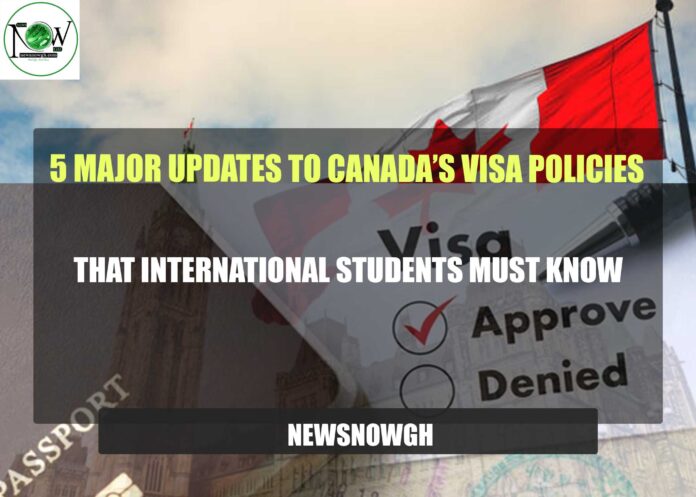5 Major Updates to Canada’s Visa Policies That International Students Must Know
International students are greatly impacted by Canada’s recent visa changes. Learn how these changes impact your road to a Canadian future, from the elimination of fast-track study permits to the reduction of residency invitations.
Significant changes to Canada’s immigration laws that impact prospective permanent residents and international students were recently announced by the government. These changes demonstrate a more stringent stance toward permanent residency pathways and student visas.
Canada’s New Visa Rules for Students
1. There is no certain route to permanent residency
- Update on Policy: Marc Miller, Canada’s Immigration Minister, made it clear that obtaining a student visa does not ensure a route to permanent residence.
- Impact: Study visa holders who are foreign students in Canada shouldn’t anticipate a smooth transfer to permanent residence. This implies that after completing their education, students must look into other options for residency, like applying through certain residency programs or obtaining work permits.
2. The Student Direct Stream (SDS) program’s termination
- Policy Update: The Student Direct Stream (SDS) will no longer be offered by the government. Before, students from 14 different countries could obtain study permits through this expedited scheme in as little as 20 days.
- Brazil, China, Colombia, Costa Rica, India, Morocco, Pakistan, Peru, the Philippines, Senegal, St. Vincent and the Grenadines, Trinidad and Tobago, Vietnam, and Antigua and Barbuda are among the nations impacted.
- Impact: Study plans and timetables for eligible students from these nations will now be impacted by extended processing timeframes for study visas.
3. Post-Graduation Work Permit (PGWP) Difficulties
- Policy Update: Post-graduation job Permits, which are essential for foreign graduates looking to gain Canadian job experience, will not be automatically extended by the government.
- Impact: A lot of students whose PGWPs are set to expire could have to make difficult choices regarding their future in Canada. Without extensions, they are forced to either depart the country or look for other legal methods to stay longer, such as finding employment that allows them to obtain a different kind of work permit.
4. A decrease in invitations to permanent residence
- Policy Update: The Canadian government is also cutting the number of invites to permanent residency by more than 20% as part of its new policy. The permanent residency quota, which attempts to balance Canada’s immigration numbers with housing, infrastructure, and public sector capacities, was recently reduced. This decision comes after that cut.
- Impact: International students who intend to apply for permanent residency after completing their studies will be impacted by this reduction. Students will need to carefully plan their residency pathway and investigate qualifying schools because there will be more competition for residency seats due to the reduced number of invites available.
5. Tougher Guidelines for Students’ Asylum Claims
- Policy Update: The government is worried about possible abuse of the system and is scrutinizing international students’ asylum petitions more closely.
- Impact: Students can anticipate more stringent evaluations of their claims if they perceive asylum as a last alternative for remaining in Canada. Invalid claims may be rejected by authorities, which would decrease the likelihood of staying in the nation.
Long-Term Impacts and Modifications to Strategy
The goal of Canada’s revised immigration laws is to balance social and economic demands while luring in top talent from around the world. With an emphasis on preserving economic stability, controlling an aging population, and meeting labor market demands, these shifts indicate a cautious attitude toward immigration.
Important Takeaways
- Canada has made it more difficult for foreign students to enter the country.
- There is no longer a Student Direct Stream (SDS).
- International students’ asylum petitions are being closely examined.
- To deal with labor shortages and population aging, the government is managing immigration numbers.
- It is important for foreign students to properly plan their time in Canada and look into possible routes to permanent residence.
Conclusion
The way that overseas students plan their education and careers in Canada will change as a result of these visa adjustments. Careful planning and evaluation of alternate routes are necessary due to stricter regulations and fewer residence chances. Although negotiating Canada’s immigration situation has grown more difficult, the country is still a popular choice for international students.
Follow us on Newsnowgh.com to stay updated on the latest information regarding work permits, visa application processes, paths to permanent residency, and visa-sponsored employment.


